سرخپوستان آمریکای شمالی
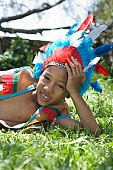
North American Indians
The first people who lived in North America were the Indians. The name “Indians” is actually not very accurate, because the people are not from India. But when the first Europeans came to North America, they mistakenly believed that they had reached India, so they referred to the people as Indians. In different parts of North America, the Indians had very different cultures and very different ways of making a living.
On the west coast of North America, many large rivers flow into the Pacific Ocean. In these rivers is an abundance of fish, such as salmon. The Indians in these areas obtained much of their food by fishing. They lived in settled villages, and became experts in carving wood from the tall trees of the area. They carved large canoes for traveling on the rivers and oceans, and they also carved tall “totem poles.” Totem poles were carvings of various animal or human figures, and often the poles had a mythical or spiritual significance for the people who carved them. Many beautiful totem poles can be seen in cities such as Vancouver or Victoria, in the Canadian state of British Columbia; or Seattle, in the American state of Washington.
The Plains Indians lived in the central prairie of North America. The various nations of the Plains lived by hunting large animals called buffalo, or bison. Horses were brought to North America in the sixteenth century by the Spanish. The Indians who lived in the prairie areas had learned to become experts at riding horses, and on horseback they could hunt the giant herds of bison. They followed the buffalo from place to place. The Plains Indians lived in portable houses called “teepees,” which were made by sewing together buffalo skins, and holding them in place with wooden poles.
In the southwestern United States, some Indians lived by farming. In this dry area, the Indians raised several crops, such as corn, beans, and squash. Many of the Indians in these areas lived in large settlements, where the houses were made from stone or dried mud. The people were experts at weaving, and they made clothing and blankets that had beautiful artistic designs.
Near the eastern coast of North America, many Indians lived by a combination of farming and hunting. These people lived in fortified villages, some of which were inhabited for many years at a time. In some places, they built large earthworks that can still be seen today.
In the forests of northern Canada, the Indians lived primarily by hunting, fishing, and gathering. Like the Indians of the prairie regions, they often moved from place to place in search of game animals to hunt.
Today, the Indians of North America no longer live in their traditional ways. However, several Indian languages are still spoken by many thousands of people. Also, many Indians in the United States and Canada are very interested in maintaining the cultural traditions of their ancestors.
Indian
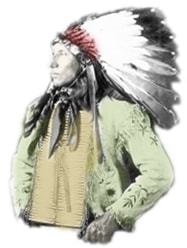
a NATIVE AMERICAN
CULTURAL NOTE Native Americans have often been shown, esp. in movies, as cruel and warlike people, although recently books and movies have tried to show them more favorably and to present their point of view. Most Native Americans suffered greatly from European settlers moving onto their lands, and fought to defend themselves and their way of life; this is still happening in parts of S America. In N America Native Americans were forced to leave their lands and live on RESERVATIONs (=areas of land set aside for them). Most still live on reservations, and many are very poor and have problems resulting from unemployment and drinking alcohol. Many tribes are working to improve conditions on the reservations, and some are also trying to bring back old customs and religious practices.
USAGE Native American is now the preferred and usual term. American Indian and Amerindian are still used, esp. in referring to Native Americans from S America. Red Indian and red man are old-fashioned and usu. considered offensive.
—
mistaken
be mistaken
if you are mistaken, you are wrong about something that you thought you knew or saw
It can’t have been my car. You must be mistaken.
I thought he said 12 o’clock, but I might have been mistaken.
We bought the rug in Turkey, if I’m not mistaken .
mistakenly adv
Another Source
(of a person) wrong; having understood incorrectly: I think you must be mistaken about seeing him at the theater; I’m sure he’s been overseas all week. | Unless I’m (very much) mistaken, that’s my watch you’re wearing!
—
abundance

a large quantity of something, plenty
abundance of
an abundance of wavy red hair
in abundance
One quality the team possessed in abundance was fighting spirit.
At the party there was food and drink in abundance.
The country has an abundance of skilled workers, but not enough jobs
an abundance of mineral resources
—
salmon / ˈsæmən /
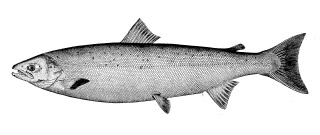
a large fish with silver skin and pink flesh that lives in the sea but swims up rivers to lay its eggs
to go fishing for salmon
canned salmon
smoked salmon sandwiches
—
totem pole
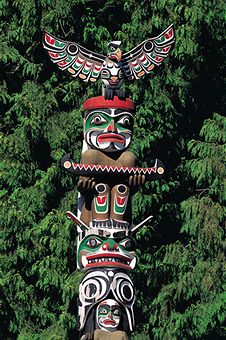
a tall wooden pole with one or more totems cut or painted on it, made by the Native Americans of northwest North America
—
prairie /ˈpreri /
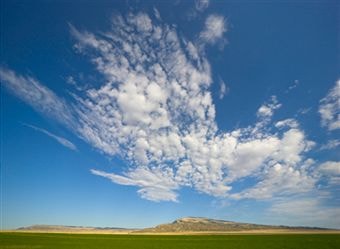
a wide open area of fairly flat land in North America which is covered in grass or wheat
Search for more examples on
—
bison
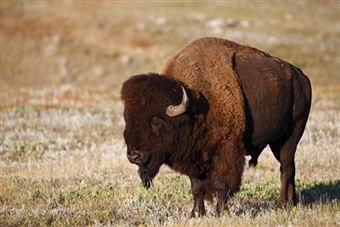
an animal like a large cow with hair on its head and shoulders
—
horseback
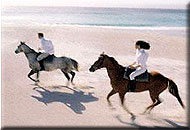
on horseback (riding) on a horse: Police on horseback broke up the demonstration.
—
herd
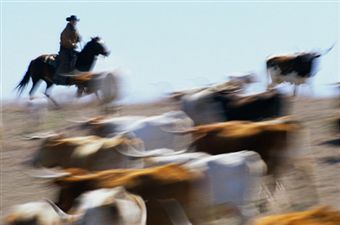
a group of animals of one kind that live and feed together
ᅳsee also flock
herd of
a herd of cattle herds of elephants
—
teepee
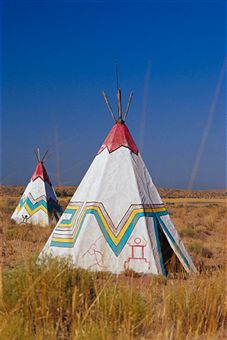
another spelling of tepee
a round tent with a pointed top, used by some Native Americans
—
pole
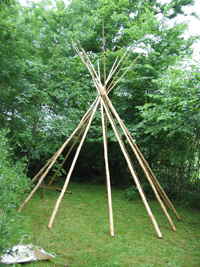
▶STICK/POST◀
a long stick or post usually made of wood or metal, often set upright in the ground to support something
a telephone pole
—
settlement
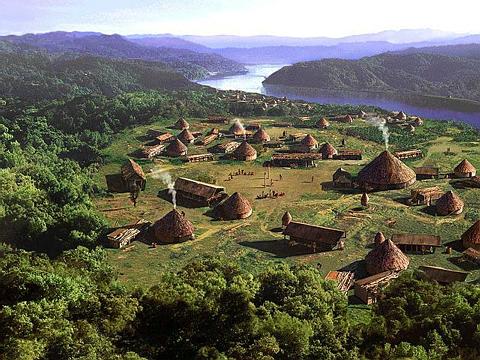
a group of houses and buildings where people live, especially in a place where few people have lived before
The railway stations created new settlements.
an early Iron Age settlement
—
clothing

the clothes that people wear
the basic necessities such as food and clothing
warm/outdoor/waterproof etc clothing
Lab workers must wear protective clothing.
item/article/piece of clothing
She took only a few items of clothing.
Remember to bring a change of clothing .
clothing manufacturer/industry/trade etc
a clothing store
—
fortified
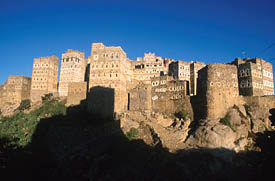
fortify verb
to build towers, walls etc around an area or city in order to defend it :
The town was heavily fortified.
—
inhabit verb
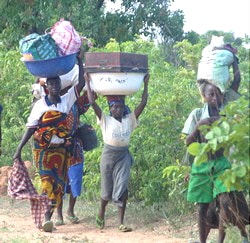
if animals or people inhabit an area or place, they live there SYN live :
The woods are inhabited by many wild animals.
inhabited islands
—
earthwork
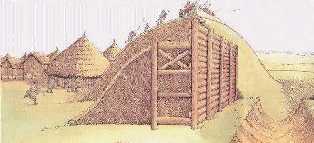
a large long pile of earth, used in the past to stop attacks
Another Source
a man-made bank of earth used esp. formerly as a protection against enemy attack.
—
maintaining

to continue to have, do, etc., as before; KEEP up: He took the lead, and maintained it until the end of the race. | I hope you will maintain your recent improvement. | Part of her job is to maintain good relations with our suppliers.
Careers Officers maintain contact with young people when they have left school. Britain wants to maintain its position as a world power. A lot depends on building and maintaining a good relationship with your customers. The hotel prides itself on maintaining high standards. How can we maintain control of spending?